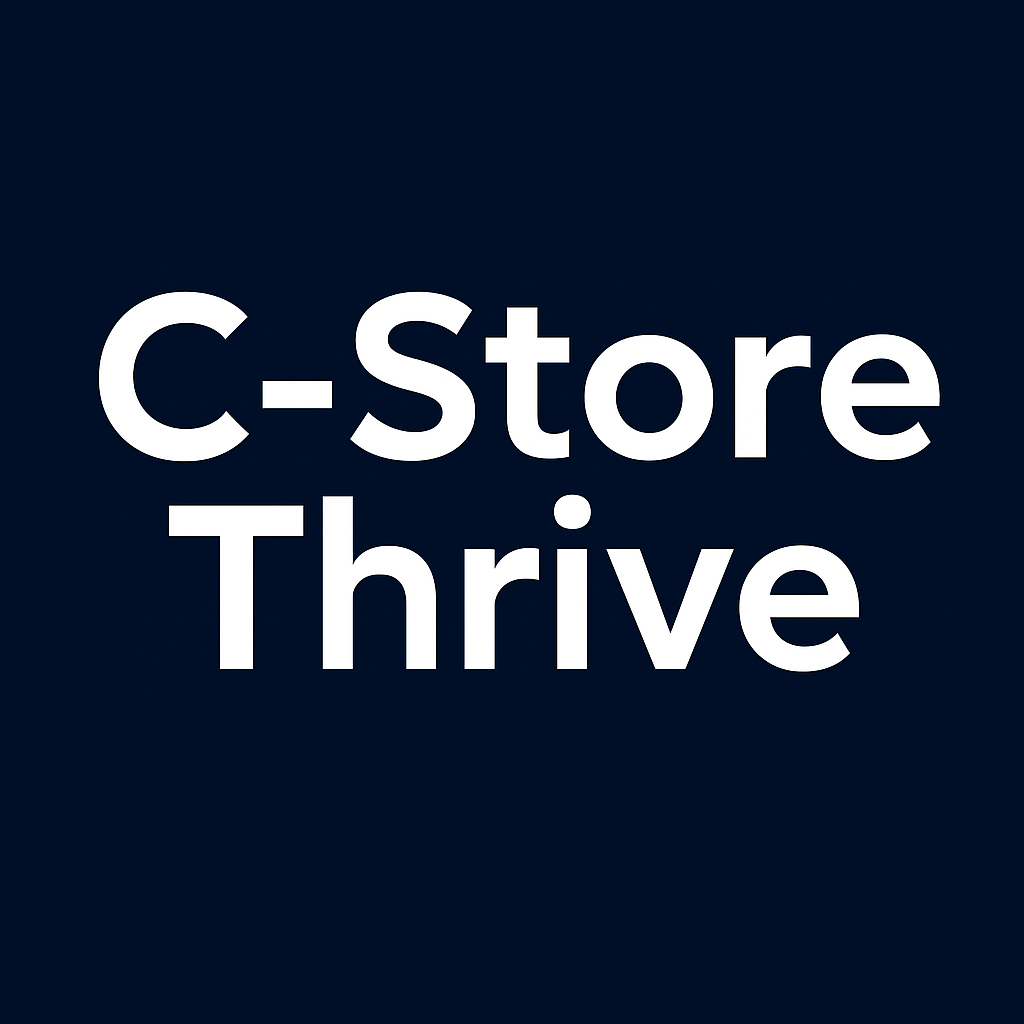Software That Actually Works: The Independent Owner's Guide to Inventory Management Features
When Frank Delacroix decided to upgrade from his handwritten inventory logs to actual software, he was overwhelmed by the choices. Every vendor promised their system would "revolutionize" his operation, but all Frank wanted was help.

When Frank Delacroix decided to upgrade from his handwritten inventory logs to actual software, he was overwhelmed by the choices. Every vendor promised their system would "revolutionize" his operation, but the feature lists read like alphabet soup—EDI integration, perpetual inventory tracking, advanced analytics dashboards. All Frank wanted was software that could help him stop running out of Coke on Fridays and ordering too much milk that expired before selling.
"I felt like I needed a computer science degree just to understand what these systems actually did," Frank recalls. After three months of demos and sales pitches, he chose a system based on a flashy presentation, only to discover it was designed for large chains and completely overkill for his single-location operation.
Six months later, Frank switched to simpler software focused on the features independent owners actually need. His inventory management improved dramatically, but more importantly, he learned that the best system isn't the one with the most features—it's the one that solves real problems without creating new headaches.
Keep It Simple: The Foundation Features
Independent convenience store owners don't need enterprise-level complexity. They need software that handles daily realities efficiently without requiring an IT department to operate.
Real-time stock tracking provides instant visibility into what's on shelves versus what the computer thinks is there. For small stores where owners often work the floor, seeing accurate inventory levels while serving customers prevents embarrassing stockouts and overordering mistakes.
Simple reorder alerts eliminate the mental burden of tracking dozens of products manually. When energy drinks hit preset minimums, the system should flag it clearly without requiring complex reports or analytics interpretation.
Basic sales reporting shows which items move fast and which sit stagnant. Independent owners need straightforward "best sellers" and "slow movers" lists, not complicated analytics that require data science knowledge to interpret.
"The breakthrough moment was realizing I didn't need fancy features—I needed reliability," explains Priya Patel, whose streamlined software approach improved her inventory accuracy by 67%. "Simple stock levels, clear reorder alerts, and basic sales data handle 90% of my inventory decisions."
Must-Have Feature #1: Easy Product Setup
Nothing kills software adoption faster than complicated product entry processes. Independent owners often add new items weekly and can't afford to spend hours setting up each product.
Barcode scanning for product entry saves massive time compared to manual data input. Point the scanner at a product, and basic information should populate automatically from manufacturer databases.
Quick category assignment lets owners group similar products without complex taxonomy systems. Simple categories like "snacks," "beverages," "tobacco" work better than elaborate hierarchical structures.
Vendor linking connects products to suppliers for streamlined ordering. When it's time to reorder, the system should know which vendor supplies each item without requiring manual lookups.
Beatrice Johnson learned this lesson during her initial software setup: "The first system required 15 minutes per product to enter all the 'required' fields. With 800+ products, I would've needed weeks just for setup. My current system gets products entered in under a minute with basic scanning."
Must-Have Feature #2: Integrated POS Connection
Inventory software that doesn't talk to the point-of-sale system creates double work and accuracy nightmares. Seamless integration eliminates manual data entry and provides real-time inventory updates.
Automatic sales deduction updates inventory levels as items scan at checkout. No more end-of-day manual adjustments or wondering why counts don't match sales.
Price synchronization ensures inventory and POS systems show identical prices. Price changes entered once should update everywhere automatically, preventing customer confusion and cashier mistakes.
Promotion handling tracks special pricing and discounts without breaking inventory calculations. BOGO deals and markdowns need to register properly in both sales and stock systems.
"Before integrated systems, I spent two hours daily reconciling sales with inventory counts," recalls Hassan Al-Rashid. "Now it happens automatically, and my accuracy improved from about 80% to 97%."
Must-Have Feature #3: Supplier Communication Tools
Small store owners typically work with multiple vendors who have different ordering systems, delivery schedules, and communication preferences. Good inventory software bridges these gaps.
Electronic ordering streamlines the ordering process with major suppliers who support digital transactions. Instead of phone calls or faxed orders, approved orders transmit automatically from inventory to supplier systems.
Order history tracking maintains records of what was ordered when, making it easier to spot delivery discrepancies or track spending patterns with specific vendors.
Delivery confirmation helps owners verify that what arrived matches what was ordered. Quick scanning of delivered items against purchase orders catches shortages or substitutions immediately.
Nguyen Tran credits supplier integration with saving him six hours weekly: "I used to spend Monday mornings calling five different vendors to place orders. Now, most orders go electronically based on reorder points, and I just review and approve them."
The Mobile Factor: Managing from Anywhere
Independent owners rarely sit at back-office computers all day. They're on the floor helping customers, handling deliveries, or managing multiple responsibilities. Mobile access isn't luxury—it's necessity.
Smartphone apps provide full functionality on devices owners already carry. Checking stock levels, placing orders, or reviewing sales data should work seamlessly on phones without requiring computer access.
Offline capability ensures the system works even when internet connections falter. Rural locations or stores with unreliable connectivity need systems that sync data when connections return.
Quick lookup functions let owners check prices or inventory levels while talking to customers or vendors. Fast, accurate information access improves customer service and decision-making.
"Mobile access changed everything for me," explains Bridget O'Sullivan, whose rural store struggles with internet reliability. "I can check inventory while unloading trucks, look up prices for customers, and even place emergency orders from my phone when the computer's down."
Keeping It Real: Accuracy Features
Inventory accuracy makes or breaks convenience store profitability. Software features that improve counting accuracy and catch discrepancies early prevent major problems.
Cycle counting support breaks large inventory counts into manageable daily tasks. Instead of dreaded full-store counts, owners can verify 20-30 items daily and maintain accuracy year-round.
Variance reporting highlights discrepancies between system counts and physical inventory. Quick identification of counting errors or theft helps address problems before they escalate.
Adjustment tracking maintains audit trails when inventory corrections are necessary. Understanding why adjustments happen helps identify systemic issues like theft, spoilage, or counting errors.
Viktor Petrov's accuracy improvement illustrates these features' value: "Monthly variance reports showed our cigarette counts were consistently off. Turns out, we had a counting procedure problem, not a theft issue. Fixing the process eliminated 90% of our cigarette discrepancies."
Price Management Made Simple
Pricing complexity can overwhelm small store owners who lack dedicated pricing staff. Effective inventory software simplifies price management without sacrificing control.
Bulk price updates handle vendor price changes efficiently. When Coca-Cola raises prices 3%, the system should update all Coke products simultaneously rather than requiring individual item changes.
Margin calculation tools help owners maintain target profit margins when costs change. If wholesale prices increase, the system should suggest retail price adjustments to preserve margins.
Promotional pricing manages temporary price changes without disrupting base pricing. Sale prices should activate and deactivate automatically based on preset dates.
"Price management used to take me three hours every time vendors changed their pricing," recalls Isabella Moreau. "Now bulk updates handle most changes in minutes, and I can focus on strategic pricing decisions instead of data entry."
The Integration Sweet Spot
While independent stores don't need enterprise complexity, they do benefit from systems that connect key business functions without requiring multiple software packages.
Accounting integration eliminates double entry of purchase and sales data. Inventory transactions should flow automatically to accounting systems, reducing bookkeeping burden and improving accuracy.
Tax reporting compiles necessary data for tobacco taxes, bottle deposits, and other regulatory requirements. Automated tax calculations and reporting save time while ensuring compliance.
Basic analytics provide actionable insights without overwhelming complexity. Simple dashboards showing top sellers, slow movers, and profit trends help owners make informed decisions.
What to Avoid: Feature Bloat
Many software vendors load systems with features that sound impressive but create complexity without value for independent operators.
Advanced forecasting algorithms designed for large chains often fail in small stores where local factors heavily influence demand. Simple reorder points based on actual sales work better than complex predictive models.
Multi-location management adds unnecessary complexity for single-store operators. Features designed for chains create confusion and slow down simple tasks.
Enterprise reporting generates impressive-looking reports that small store owners don't have time to analyze or act upon. Simple, actionable data beats complex analytics every time.
Cost vs. Value Reality Check
Software costs can quickly escalate with feature additions, but independent owners need systems that provide clear return on investment.
Monthly subscription models often work better than large upfront costs for cash-conscious independent operators. Predictable monthly expenses are easier to budget than major capital outlays.
Scalable pricing allows owners to start simple and add features as needed. Paying only for features actually used keeps costs manageable while providing growth options.
Training and support costs should factor into total system expenses. Complex systems requiring extensive training or ongoing support can exceed their value quickly.
"I learned that the cheapest system isn't always the most economical," admits Jerome Washington, who switched systems twice before finding the right balance. "Paying a bit more for reliability and support saves money compared to dealing with constant problems."
The Bottom Line for Independent Owners
The best inventory management software for independent convenience stores isn't the most feature-rich or technologically advanced—it's the system that reliably handles daily operations while fitting the owner's budget and technical comfort level.
Essential features include real-time stock tracking, simple reorder alerts, POS integration, mobile access, and basic reporting. Everything else should be evaluated based on specific store needs rather than impressive feature lists.
"Six months after switching to software focused on what I actually needed, my inventory turns improved 31%, stockouts dropped 78%, and I gained back eight hours weekly for other priorities," reports Aisha Okafor, whose practical approach paid off significantly.
For independent convenience store owners, the goal isn't having the most sophisticated system—it's having a system that works reliably, fits the budget, and actually makes inventory management easier rather than more complicated. The right software should feel like a helpful assistant, not a demanding boss requiring constant attention.
Success comes from matching software capabilities to real operational needs, not from buying the most features or following the latest technology trends. Independent operators who focus on practical functionality over flashy features typically achieve better results with lower stress and reasonable costs.





